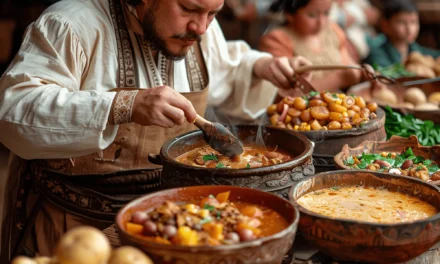Bread has been around for a long time, and humans have used it for all sorts of things. But in the late 1700s, one wealthy gambler had a different use for bread. He wanted to be able to eat it comfortably!
Our story begins in 1762 with John Montagu, the 4th Earl of Sandwich. Legend has it that he asked his cook to put some beef between two slices of bread, and voila! The sandwich was born.
The idea of sandwiches quickly gained popularity in England and soon expanded to other countries. These days, there are endless possibilities for what you can put between two slices of bread. So whether you’re a fan of PB&J or ham and cheese, we hope you’ll appreciate this humble dish that has come a long way since its humble beginnings.
From Earl to sandwich legend
A prominent naval commander, Sir Edward Montagu became the first Earl of Sandwich when he was offered a peerage in 1660. He was a privy council member and held several critical naval posts. In 1665, he was made a Knight of the Garter. He died in 1672, leaving behind a legacy as one of the most respected naval commanders of his time1.
John Montagu, the fourth Earl of Sandwich, was a British nobleman who lived in the 18th century. He was known for his love of food and is said to be the sandwich’s inventor. According to legend, Montagu was so fond of sandwiches that he would often ask his servants to bring him one to eat while working or gambling. This eventually led to the sandwich becoming a popular food item, which is now enjoyed by people worldwide2.

In his book Londres, French writer Pierre-Jean Grosley recounted his observations of English life in the late 1700s. He noted the city’s bustling activity, its architecture’s grandeur, and its residents’ polite manners. A few lines were written in the book that forever tied this food invention to the Earl of Sandwich 3.
“A minister of state passed four and twenty hours at a public gaming table, so absorbed in play that, during the whole time, he had no subsistence but a piece of beef, between two slices of toasted bread, which he eat without ever quitting the game. This new dish grew highly in vogue during my residence in London; it was called by the name of the minister who invented it”3.
The rise of the sandwich: How one man changed the way we eat
The sandwich as we know it was popularized in England in 1762 by John Montagu, the 4th Earl of Sandwich. He was a keen gambler and is said to have come up with the idea of putting meat between two slices of bread so he could eat without putting down his cards. The sandwich quickly became a popular snack among the upper classes and soon spread to the rest of the country. Montagu enjoyed his meat and bread so much that he ate it constantly, and as the concoction grew popular in London society circles, it also took on Earl’s name4.
Who doesn’t love a good sandwich? I’m sure even Montagu’s friends were happy to hear about this new invention. It’s the perfect snack when you’re on the go or just want something quick and filling. Edward Gibbon was one of the first to try it, and he enjoyed it so much that he helped to spread the word. The sandwich quickly became a popular snack among the upper class and remains a staple today3.
In 1773, the word sandwich was used in a recipe for the first time, in Charlotte Mason’s cookbook, titled: “The Lady’s assistant for regulating and supplying her table: Being a Complete System of Cookery, Containing One Hundred and Fifty Select Bills of Fare.” This marks the first time the word sandwich appears in print and is thought to be the word’s origin. The sandwich was originally made with slices of beef between two pieces of toast and was a popular dish among the upper class in England3.
From Matzo to Masterpiece: The Evolution of the Sandwich
John Montagu, the 4th Earl of Sandwich, is often credited with inventing the sandwich. However, he was hardly the first to think of putting fillings between slices of bread. The ancient Greeks and Romans both had versions of the sandwich, and the idea probably dates back even further. Montagu’s contribution was popularizing the sandwich as a quick and easy meal1.
Montagu traveled to the Mediterranean and was amazed by the variety of mezze platters on offer. Turkish and Greek mezze platters were served, each with its unique flavor. Montagu was blown away by the type and taste of these mezze platters and vowed to bring them back to the UK2.
The principle of bread and filling likely dates to around 9000 B.C.E., when permanent settlements were established in the Middle East. At that time, hunter-gatherers began to plant and harvest grain, which became a staple food in their diet. The bread and filling principle were likely developed to make the most efficient use of this new food source. This principle allowed people to create a more balanced and nutritious meal, which was essential for survival; plus, it’s pretty delicious!5
The first recorded sandwich was by the famous rabbi, Hillel the Elder, who lived during the 1st century B.C. He is said to have put a mixture of chopped nuts, apples, spices, and wine between two matzos to eat with bitter herbs, and the sandwich was born. Since then, sandwiches have been a popular food item worldwide and come in various shapes, sizes, and flavors1.
The sandwich is a new creation for Europeans. Still, forms of sandwiches have been around for centuries in different parts of the world. The sandwich is a simple concept: a filling between two slices of bread. Since the creation of unleavened flatbreads, people have used these slices of bread to hold their meats and fish. It’s like two slices of bread holding hands with deliciousness in the middle!1

How the sandwich became America’s most popular food
The first recorded mention of sandwiches in an American cookbook was in 1816, though it is likely that they were eaten long before that. Sandwiches were a convenient and portable meal, perfect for busy people on the go. They quickly became popular, and soon there were many different variations available. The fillings were no longer limited to cold meat, as recipes called for various things, including cheese, fruit, shellfish, nuts, and mushrooms3.
In the wake of the Civil War, there was a marked increase in sandwich consumption. This was partly due to the increasing popularity of the sandwich as a quick and easy meal. However, the rise in sandwich consumption was also because many Americans were living in poverty and could not afford to buy fresh meat or vegetables. A sandwich is much more affordable than a steak dinner when you’re struggling to make ends meet3.
As the 19th century closed, sandwiches earned new names for their many different forms. No longer were they simply two slices of bread with some filling in the middle. Now, there were all sorts of variations – some with multiple layers of bread, others with different types of bread and fillings ranging from meats and cheeses to fruits and vegetables3.
Some famous new creations included the club sandwich, the BLT, and the grilled cheese. And as people became more creative with their sandwich-making, the possibilities were endless5.
- Lifestyle Direct, Inc. (2020). Sandwich History: Did The Earl Of Sandwich “Invent” The Sandwich? Retrieved from The Nibble: http://www.thenibble.com/reviews/main/breadstuffs/sandwich-history.asp[↩][↩][↩][↩]
- Butler, S. (2018, August 22). The Story of the Sandwich. Retrieved from History: https://www.history.com/news/the-story-of-the-sandwich[↩][↩]
- Avey, T. (2013, January 3). Discover the History of the Sandwich. Retrieved from PBS Food: https://www.pbs.org/food/the-history-kitchen/history-sandwich[↩][↩][↩][↩][↩][↩][↩]
- BBC. (2012, May 12). Sandwich celebrates 250th anniversary of the sandwich. Retrieved from BBC News: https://www.bbc.com/news/uk-england-kent-18010424[↩]
- Olver, L. (2015, March 20). FAQ: Sandwiches. Retrieved from Food Timeline: http://www.foodtimeline.org/foodsandwiches.html[↩][↩]




